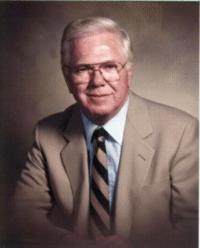
(1925 - 2005)
The Father of Systems Methodologies
MILT BRYCE INTERVIEW
Recorded April 1, 1991

Click HERE |

MILT BRYCE INTERVIEW
Recorded April 1, 1991

Click HERE |
|
Mr. Bryce was an accomplished Information Systems professional who was intimately involved with the computer industry since 1954 and was one of the industry's leading authorities on Information Resource Management. After serving in World War II, he earned a Bachelor of Arts (BA) degree in Industrial Psychology from the University of Buffalo (now the State University of New York at Buffalo). His systems career began in the Engineering Department at the E.I. DuPont Company in Wilmington, Delaware. In 1954 he was a member of the DuPont team evaluating the first computer, the UNIVAC I, Number 1 at the U.S. Bureau of Census. On the UNIVAC I, he wrote several engineering applications. He developed the first computerized estimating system for plant construction projects. Mr. Bryce also designed and implemented the labor work sampling system for the construction division. He eventually joined Univac in 1959 where he served as Product Planning Manager. He was later promoted to Manager of Systems Software Support which involved supporting Univac products on a world-wide basis. While at Univac, Mr. Bryce made several contributions in the areas of software design and hardware planning, primarily in the areas of operating systems and computer equipment. As Product Planning Manager, he specified the industry's first memory keypunch. His group was also responsible for specifying the Mod-V Tabulator which was marketed as the 1004 and 1005 small computers. In 1965 he joined the Quaker Oats Company in Chicago where he served as MIS Director. He was brought to Quaker to implement the company's master "Management Information System". It was here where he identified the need for managing data as a corporate resource and the concept of a Data Dictionary/Directory emerged. In order to implement these ideas, he established the industry's first Data Management organization, a group that still exists to this day at Quaker. To aid in this regard, Mr. Bryce became exposed to General Electric's Integrated Data Store (IDS) which was later obtained and marketed by Honeywell. In 1968 he was recruited by the U.S. Shoe Corporation in Cincinnati as Corporate MIS Director where he was responsible for the development and operation of all Information Systems for the corporation and its subsidiaries. Here he developed a methodical approach for designing Information Systems which made use of his Data Management concepts. In 1971 Mr. Bryce started his own company, M. Bryce & Associates (MBA, later to become M&JB Investment Company) and developed the "PRIDE"-Information Systems Engineering Methodology (ISEM). "PRIDE" is the culmination of his experience in the field. It applies the concepts and techniques of engineering and manufacturing towards designing Information Systems. "PRIDE" set many precedents: It was the world's first commercially available Systems Design Methodology (SDM), the first Data Dictionary/Directory, and the first Structured Systems Design technique, which the company refers to as "Chronological Decomposition". "PRIDE" also includes disciplines for Project Management and Documentation. Since its introduction in 1971, it has been installed in over 1600 installations worldwide. In addition to his regular duties as President and C.E.O., he was a frequent speaker and contributor of systems management related articles. He made presentations to every significant trade related group in the world. In addition, he frequently lectured on Information Resource Management in Japan, which is the company's second largest customer base. In 1982 he was recognized in Tokyo for improving the productivity of systems development in Japan. He also co-authored of the book, The IRM Revolution: Blueprint for the 21st Century (ISBN 0-9621189-0-7), which was on the Top 10 list in Japan. Mr. Bryce was a charter member of the Association for Computing Machinery (ACM) and the American Association for Artificial Intelligence. Milt passed away on January 3, 2005 at his home in Palm Harbor, Florida.
 |